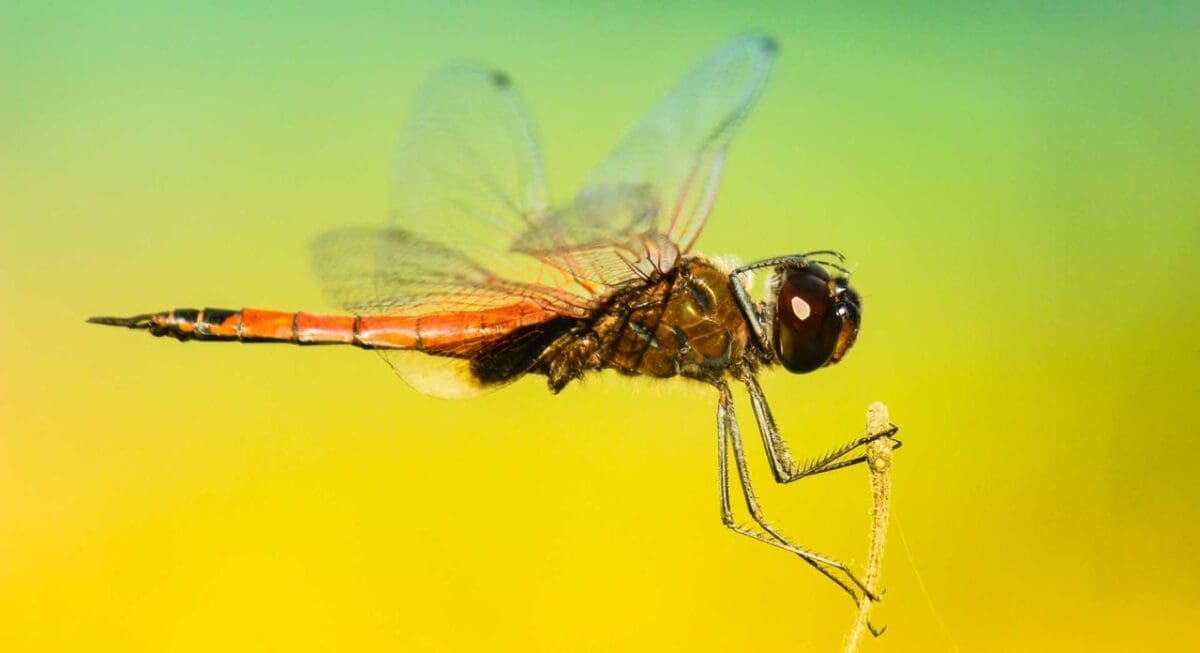The great thing about shooting macro photography is that you rarely have to travel beyond your own garden to capture striking pictures. But when you’re shooting subjects like insects close-up, there are a few challenges you need to overcome. In this tutorial you’ll find some of our best macro insect photography tips for capturing miniature wildlife in fascinating detail.
Insect photography tips: 01 Research your subject
This sounds like an obvious one, but we’re all a bit guilty of not doing this from time to time. The thing is, when you research your subjects, even just a at a cursory level, you’ll find that you glean clues that can help you get a much better image!
For instance, if you’re shooting insects in your garden a little bit of Googling will tell you where they like to dwell, when they eat, when they’re most active and other crucial elements of their behavior.
Insect photography tips: 02 Static subjects
Some insects, like dragonflies and even bees, can move quite quickly and erratically, and these require some patience to photograph. But there are plenty of other subjects like snails and spiders that will quite happily hang out and pose for your camera!
If you’re new to insect macro photography subjects like these can be a great way to experiment and hone your skills with different equipment and techniques.
For instance, flash. Practicing your craft with static subjects like snails can give you the confidence you need to use it in other situations.
One thing to remember when using flash: try capturing subjects with medium tones and avoid paler creatures.
Insect photography tips: 03 Lure in insects
Going back to that research angle, there are certain species of plants and flowers that butterflies, bees and other photogenic insects are really drawn to.
Again, just a quick Google search will set you on the right path. You can also ask anyone working at your local garden centre for advice on which plants attract pollinators.
When you have plants that certain insects are naturally drawn to, it’s then just a case of setting up your camera nearby and waiting for your subjects to appear.
Insect photography tips: 04 Slow down your movements
In the warmer months insects are at their most active, and they are very hyper-aware. The slower and stiller you can be, the easier time you will have setting up a shot.
Vary your camera angles, as well as the distance from which you shoot your subjects. Start from farther away, and this will at least mean that if you accidentally frighten your chosen subject or it flies off suddenly, you will have something in the bag.
Insect photography tips: 05 Shoot in the morning
That said, if you avoid shooting during the warmest periods of the day you’ll find that you get much better images. Early morning is probably the best time to photograph insects, as it’s cooler out and they’re less active.
In the warmer parts of the day insects are much more active, and you’ll find it harder to get an image.
Insect photography tips: 06 Shoot in the rain
Don’t leave your camera on the shelf when it’s raining! Landscapes and other types of outdoor photography aren’t ideal to shoot in the rain, but inclement weather can have some advantages for the insect photographer.
Assuming a little light rain won’t damage your camera, you can often find insects congregating in sheltered spots in your garden when it rains. And when they’re all concentrated like this it increases your opportunity for striking images.
Insect photography tips: 07 Use a tripod
This is another one that may seem obvious, but it’s another one we often forget. You may think you’re just popping out to the garden for a few minutes so you won’t need it… but you do.
We all know a tripod stabilizes your camera and reduces the risk of camera shake, allowing you to shoot at slower shutter speeds. But the byproduct of this is that it gives consistency to your compositions. There’s a lot to be said for this when you’re building a portfolio of images.
Insect photography tips: 08 Diffuse your flash
If you’re using a flashgun to shoot insect photography you can often end up with bright highlights or unwanted reflections. The simple way around this is to use a diffuser to soften the light from your flashgun.
Flash diffusers are inexpensive and you can even make a DIY model one from a plastic milk carton.
If you seek out subjects that are physically close to their background, the risk of flash fall-off will be much less.
Insect photography tips: 09 Add interest
Sometimes you can make a more powerful image by thinking about what you can include in your frame that tells a story about your subject.
For instance, if you’re patient you might find groups of insects feeding or engaging in other interesting behaviours.
If all your shots are head-on shots of insects, as striking as they may be your portfolio may end up looking a bit samey. Think about ways you can add variety through different focal lengths, formats, etc.



